preview The Z10 wasn’t the only new BlackBerry to launch last week with the company’s shiny new BlackBerry 10 operating system on board. The company formerly known as Research in Motion also has another model available for the physical keyboard traditionalists. But will it be enough to keep the BlackBerry faithful loyal? Read on to find out.
Note: This article represents an advanced look at the design, features and likely performance of this product, but we haven’t actually tested or played with it ourselves it yet. A follow-up full review will be published when we have.
Design
If the Z10 (see our preview here) is BlackBerry’s attempt at taking on the smartphone world currently dominated by Apple and its Android rivals, then the Q10 is the company’s ode to its roots. The overall design of the Q10 will be very familiar to anyone who’s used a BlackBerry handset over the past decade.
You get the same squarish oblong black rectangle in the Q10’s design as previous BlackBerrys with physical keyboards, with the same heavily rounded corners (it also comes in white). The same discrete keys sit below the moderately sized screen (which is squarish, and will look a little odd to many of those who have migrated into the new smartphone reality of long rectangular touchscreens). The same hard black plastic looks to be on the front of the Q10’s casing, and its back looks to be a soft, leathery substance not unlike the back of Google’s popular Nexus 7 model.
The Q10’s main camera is on the back at the top-left, and there’s a smaller front-facing camera above the screen, next to what appears to be a decently sized speaker. On the right-hand side of the model, you get a volume rocker, and on top the 3.5mm headphone jack. It looks like there’s a charging/synching input on the Q10’s bottom. The model measures 119.6 by 66.8mm, and it’s 109.35mm thick. It has a moderate weight of 139g.
Overall the Q10 is pretty much what you would expect from BlackBerry, design-wise, in a model which is no doubt supposed to appeal to the rapidly diminishing segment of the smartphone market which still prefers a physical keyboard. It looks like it will be very comfortable to use, is quite stylish and will also easy to slip into a jacket or trouser pocket.
Features
Overall, the features of the BlackBerry Q10 are standard for a high-end smartphone in early 2013, but not standout. They are also quite similar to its fully touch-enabled sibling smartphone, the Z10.
The model’s processor is a dual-core, 1.5GHz Qualcomm Snapdragon S4 Plus model and its Super AMOLED touchscreen is on the small side (due to the physical keyboard) at 3.1″ but still has a decent resolution of 720×720 at 330PPI. The main rear camera is a now industry standard eight megapixel model which can shoot 1080p HD video, its front-facing camera is a two megapixel model which can shoot 720p HD, and yes, it has a microSD slot that can take up to 64GB SD cards.
The Q10 comes with 2GB of RAM, 16GB of on-board internal storage, and support for the normal 802.11 a/b/g/n Wi-Fi standards (including 2.4 and 5GHz). Its battery is a 2100mAh removable model, and you get NFC, microUSB, microHDMI out, BlueTooth 4.0, and support for the 4G/LTE specification.
Of course, the real attraction to the Q10, as with the Z10, is the fact that it features version 10 of BlackBerry’s operating system. To say that this is a platform which has been rewritten from the ground up is probably an understatement. The user interface for the platform has been completely revamped and is now quite reminiscent of the iOS or Android operating systems which we all know and love.
It features most of the same concepts (including an extensive app store) as iOS and Android, but it also appears to be a bit more dynamic in its approach; not unlike the way Microsoft’s Windows Phone user interface can be quite fluid. It also places a heavy focus on communications through the dedicated BlackBerry Hub feature; allowing you to receive all of your email from multiple accounts, text messages, social networking mentions and so on, all in one place. And there is also the ability to run Android applications through an included compatibility mode.
PCWorld reports from the Australian launch of the Z10 and Q10 that a number of local Australian apps have been developed for BlackBerry 10, including from companies like Event Cinemas, goCatch, Fox Sports, Quickflix and Fairfax.
For now, it’s too early to say whether BlackBerry 10 is a feature which will deliver the Q10 and its sibling the Z10 other BlackBerry handsets an advantage over rival smartphones from Apple, HTC, Samsung, Nokia and others. As implemented in the Z10, BlackBerry 10 has attracted cautious praise from quite a few early reviewers already, although most note that it still has a few bugs to be worked out. To my mind, I view BlackBerry 10 as more bringing the BlackBerry experience in general up to a basic par for the course in terms of meeting feature parity with iOS, Android and Windows Phone.
To sum up the Q10’s featureset, what you’re getting here is a smartphone which has virtually all of the specifications of other top-end modern smartphones in early 2013 (and some which many don’t), but in a modified form factor with a smaller screen to fit in a physical keyboard for BlackBerry traditionalists. The Q10 is essentially the Z10, but with a physical keyboard.
Performance
To be honest, at this stage it’s really hard to say how the Q10 will perform, as unlike the Z10, BlackBerry hasn’t been handing out review models to the usual US gadget blogs yet, so we don’t quite know how this baby handles. In fact, at the US launch of the Z10 and the Q10, BlackBerry was at pains not to let technology journalists do much of anything themselves with the Q10, which is always a bad sign for a product’s maturity.
However, we have to say that we expect the Q10 to perform quite admirably when it comes to its physical design and keyboard. BlackBerry essentially perfected physical keyboards quite a few years back, and its models have always been pretty comfortable in the hand. The Q10 looks to be no exception to this rule. With this in mind, much of the Q10’s performance hinges on how well the new BlackBerry 10 operating system itself performs. Early reviews of BlackBerry 10 as implemented on the Z10 have been broadly favourable, but few reviewers have found any major features in BlackBerry 10 that don’t already exist in iOS, Android and Windows Phone already, and one strongly suspects that the third-party app ecosystem for BlackBerry 10 will be as inferior as Windows Phone’s is.
Conclusion
Look, we’re just going to say it. If you are one of those people who want a physical keyboard on a phone, then this is 100 percent going to be the model for you. There just aren’t many other models at all out there which off this as a feature, and BlackBerry does it best. Plus, you’ll get features and likely performance in most ways as good as other high-end smartphones in early 2013. Praise BlackBerry for being so committed to physical keyboard in an age where almost every other manufacturer has dropped them.
For everyone else, let’s face it: Why bother? The software keyboards on iOS, Android and Windows Phone are awesome, and we’re sure most people vastly prefer using them over physical keyboards at this point, especially when you consider the additional screen real estate you get with the package. The Q10 is a specialist phone for specialist needs; you know what this model is for and it’s probably not for most people. It will likely be good at what it does; but it’s also likely that you won’t need a physical phone keyboard in your life any time soon.
Image credit: BlackBerry

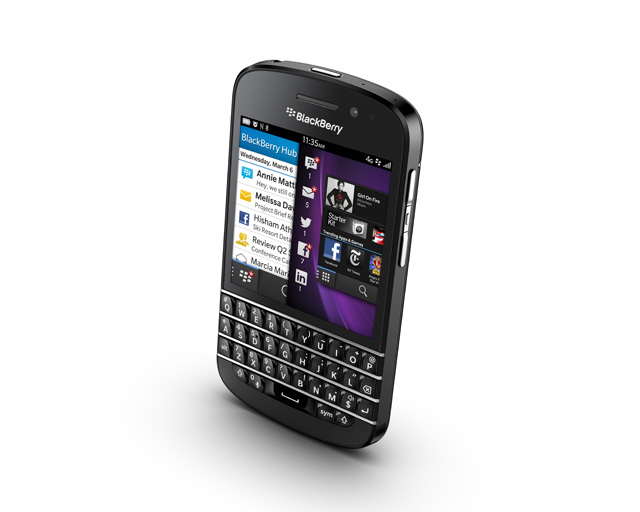
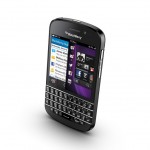

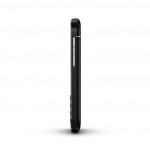
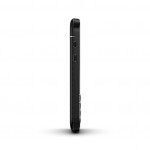
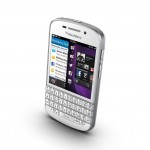

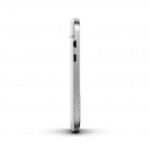
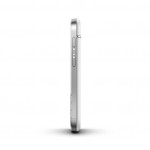
One reason blackberry will die from my perspective:
Its Activesync.
The old Blackberry model had a “vpn like” network behind it. this allowed for hig security and most importantly “pre-processing” of data.
This pre-processing means lower bandwidth utilization (so better battery life) but also means that when my global roaming users when overseas their data costs were an order of magnitude LOWER than the iphone/WP/Android phone users. I’m talking about the difference between a $1500.00 (at most) data cost and a $30,000.00 (not the biggest) data cost on a active-sync device.
RIM now has a product that is trying to compete on the same technology level as every other device manufacturer out there. The others will beat them with experience.
RIM/Blackberry will die, they’ll take QNX down with them (which makes me mad, cause QNX is awesome) and our Global data roaming costs will go through the roof.
:-(
+1
Comments are closed.